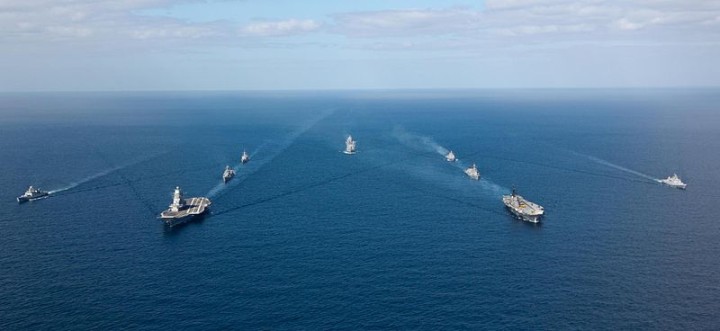World military expenditure totalled $1.8 trillion in 2014, a fall of 0.4 per cent in real terms since 2013, according to figures released today by Stockholm International Peace Research Institute (SIPRI). The comprehensive annual update of the SIPRI Military Expenditure Database is accessible from today at www.sipri.org.
World military spending, while falling for the third year in a row, has levelled off as reductions in the United States and Western Europe were largely matched by increases in Asia and Oceania, the Middle East, Eastern Europe and Africa. Spending in Latin America was virtually level.
US military spending fell by 6.5 per cent* as part of ongoing budget deficit reduction measures; spending has now fallen by 20 per cent since its peak in 2010. However, current US military spending is still 45 per cent higher than in 2001, just before the 11 September terrorist attacks on the USA.
The next three highest spenders—China, Russia and Saudi Arabia—have all substantially increased their military expenditures, with Saudi Arabia’s increase of 17 per cent making it the largest increase of any of the top 15 spenders worldwide.
‘While total world military spending is mostly unchanged, some regions, such as the Middle East and much of Africa, are continuing to see rapid build-ups that are placing an increasingly high burden on many economies’, said Dr Sam Perlo-Freeman, Head of SIPRI’s Military Expenditure project. ‘These increases partly reflect worsening security situations, but in many cases they are also the product of corruption, vested interests and autocratic governance.’
Ukraine crisis impacts spending in eastern part of Europe
The conflict in Ukraine is prompting many European countries near Russia, in Central Europe, the Baltics and the Nordic countries, to increase military spending, often revising previous plans and reversing falling trends. However, there is less sign of a similar trend in the rest of Western Europe, despite the North Atlantic Treaty Organization (NATO) asking its member states to spend 2 per cent of GDP on military spending. The five biggest spenders in Western Europe—France, the United Kingdom, Germany, Italy and Spain—have all budgeted for further cuts, albeit mostly small, in 2015. However, Germany has announced the intention to increase spending in the medium term.
Ukraine increased spending by over 20 per cent in 2014 and plans to more than double
spending on the armed forces in 2015. Russia is also budgeting for increased spending in 2015, but this was planned before the Ukraine conflict. In fact, the original Russian military
budget for 2015 has been reduced by 5 per cent due to decreased revenues from the fall in
oil prices in late 2014. Still, the revised budget is a significant increase on spending in 2014.
‘The Ukraine crisis has fundamentally altered the security situation in Europe, but so far the impact on military spending is mostly apparent in countries bordering Russia. Elsewhere, austerity remains the main driver of downward spending trends’, said Dr Perlo-Freeman.
China’s increase leads Asian trend
Military expenditure in Asia and Oceania rose by 5 per cent in 2014, reaching $439 billion. The increase is mostly accounted for by a 9.7 per cent increase by China, which spent an estimated $216 billion. Among the other major spenders, Australia increased its spending by 6.7 per cent, with smaller increases by South Korea and India of 2.3 and 1.8 per cent, respectively, while Japan’s spending remained steady. Viet Nam, which has had tensions with China over territorial disputes in the South China Sea, increased its spending by 9.6 per cent. Conversely, Indonesia, a fellow South China Sea-littoral state, broke its trend of several years of increases with a 10 per cent cut in 2014.
Other notable developments
- In Latin America, Brazil’s spending fell slightly due to economic difficulties, while crisis-hit Venezuela had the largest fall in the region of 34 per cent. Meanwhile, Mexico increased its spending by 11 per cent due to the ongoing war with drug cartels.
- The economic burden of military spending has increased in some regions, with the number of countries spending more than 4 per cent of their GDP on the military increasing from 15 to 20 in 2014. Only three of these countries have functioning democratic systems of government.
- Military spending in Africa increased by 5.9 per cent, with the top two spenders Algeria and Angola, both major oil producers, increasing their spending by 12 and 6.7 per cent, respectively.
- It is unclear what impact the sharp fall in the price of oil in late 2014 may have on the large rises in military spending that have taken place in many oil producing countries in the Middle East, parts of Africa and Asia, and Russia among others. While some producers, such as Saudi Arabia, have built up large financial reserves that will enable them to withstand lower prices for some time, others may be more affected, and indeed Russia has already cut its military spending plans for 2015 as a result.
*All percentage increases and decreases are expressed in real terms (constant 2011 prices).










